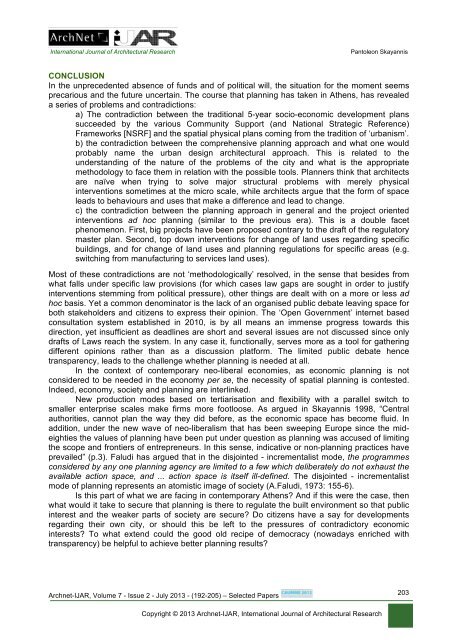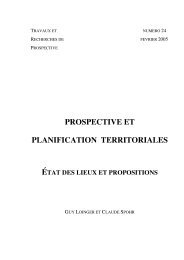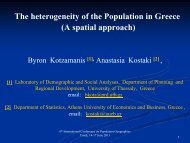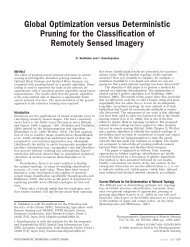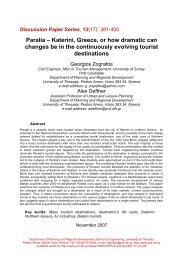International Journal of Architectural Research
International Journal of Architectural Research
International Journal of Architectural Research
Create successful ePaper yourself
Turn your PDF publications into a flip-book with our unique Google optimized e-Paper software.
<strong>International</strong> <strong>Journal</strong> <strong>of</strong> <strong>Architectural</strong> <strong>Research</strong>Pantoleon SkayannisCONCLUSIONIn the unprecedented absence <strong>of</strong> funds and <strong>of</strong> political will, the situation for the moment seemsprecarious and the future uncertain. The course that planning has taken in Athens, has revealeda series <strong>of</strong> problems and contradictions:a) The contradiction between the traditional 5-year socio-economic development planssucceeded by the various Community Support (and National Strategic Reference)Frameworks [NSRF] and the spatial physical plans coming from the tradition <strong>of</strong> ‘urbanism’.b) the contradiction between the comprehensive planning approach and what one wouldprobably name the urban design architectural approach. This is related to theunderstanding <strong>of</strong> the nature <strong>of</strong> the problems <strong>of</strong> the city and what is the appropriatemethodology to face them in relation with the possible tools. Planners think that architectsare naïve when trying to solve major structural problems with merely physicalinterventions sometimes at the micro scale, while architects argue that the form <strong>of</strong> spaceleads to behaviours and uses that make a difference and lead to change.c) the contradiction between the planning approach in general and the project orientedinterventions ad hoc planning (similar to the previous era). This is a double facetphenomenon. First, big projects have been proposed contrary to the draft <strong>of</strong> the regulatorymaster plan. Second, top down interventions for change <strong>of</strong> land uses regarding specificbuildings, and for change <strong>of</strong> land uses and planning regulations for specific areas (e.g.switching from manufacturing to services land uses).Most <strong>of</strong> these contradictions are not ‘methodologically’ resolved, in the sense that besides fromwhat falls under specific law provisions (for which cases law gaps are sought in order to justifyinterventions stemming from political pressure), other things are dealt with on a more or less adhoc basis. Yet a common denominator is the lack <strong>of</strong> an organised public debate leaving space forboth stakeholders and citizens to express their opinion. The ‘Open Government’ internet basedconsultation system established in 2010, is by all means an immense progress towards thisdirection, yet insufficient as deadlines are short and several issues are not discussed since onlydrafts <strong>of</strong> Laws reach the system. In any case it, functionally, serves more as a tool for gatheringdifferent opinions rather than as a discussion platform. The limited public debate hencetransparency, leads to the challenge whether planning is needed at all.In the context <strong>of</strong> contemporary neo-liberal economies, as economic planning is notconsidered to be needed in the economy per se, the necessity <strong>of</strong> spatial planning is contested.Indeed, economy, society and planning are interlinked.New production modes based on tertiarisation and flexibility with a parallel switch tosmaller enterprise scales make firms more footloose. As argued in Skayannis 1998, “Centralauthorities, cannot plan the way they did before, as the economic space has become fluid. Inaddition, under the new wave <strong>of</strong> neo-liberalism that has been sweeping Europe since the mideightiesthe values <strong>of</strong> planning have been put under question as planning was accused <strong>of</strong> limitingthe scope and frontiers <strong>of</strong> entrepreneurs. In this sense, indicative or non-planning practices haveprevailed” (p.3). Faludi has argued that in the disjointed - incrementalist mode, the programmesconsidered by any one planning agency are limited to a few which deliberately do not exhaust theavailable action space, and ... action space is itself ill-defined. The disjointed - incrementalistmode <strong>of</strong> planning represents an atomistic image <strong>of</strong> society (A.Faludi, 1973: 155-6).Is this part <strong>of</strong> what we are facing in contemporary Athens? And if this were the case, thenwhat would it take to secure that planning is there to regulate the built environment so that publicinterest and the weaker parts <strong>of</strong> society are secure? Do citizens have a say for developmentsregarding their own city, or should this be left to the pressures <strong>of</strong> contradictory economicinterests? To what extend could the good old recipe <strong>of</strong> democracy (nowadays enriched withtransparency) be helpful to achieve better planning results?Archnet-IJAR, Volume 7 - Issue 2 - July 2013 - (192-205) – Selected Papers203Copyright © 2013 Archnet-IJAR, <strong>International</strong> <strong>Journal</strong> <strong>of</strong> <strong>Architectural</strong> <strong>Research</strong>


